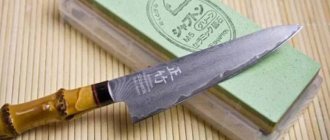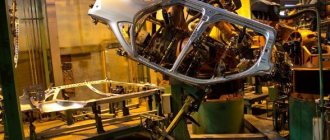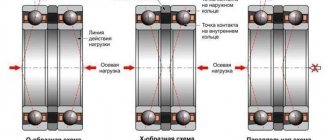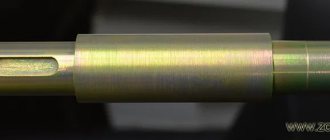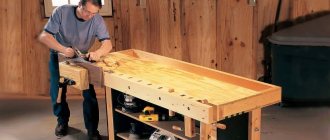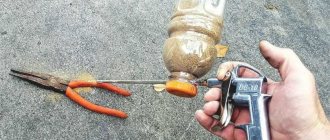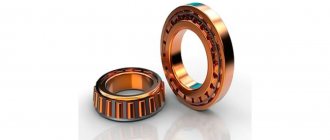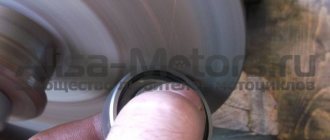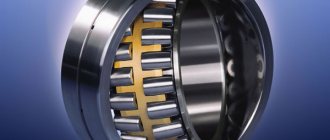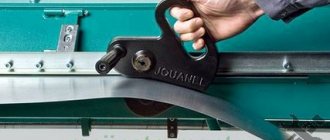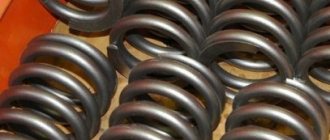Bearings are needed in any components that use rotational motion. There are many standard sizes, and the main types are ball, roller and conical roller. Bearings operate under different conditions, therefore the materials for their manufacture may differ in chemical composition and characteristics.
Bearings of different types and sizes
How bearings work
Bearings consist of a pair of rings (outer and inner), between which rolling elements are placed: rollers or balls. During operation, they move along raceways (grooves) made on the surface of the rings. To ensure that the rollers or balls do not move from the raceways and maintain the distance between them, the rolling bodies are placed in special cages (separators). Most bearings have this design, but some types operate without cages (they are characterized by a large number of rolling elements and a high load capacity, but a low maximum rotation speed).
The bearing consists of these parts: 1 – housing, 2 – rolling elements, 3 – cage (separator), 4 – groove for rolling elements, 5 – inner ring
Why do you need to measure the hardness of bearings?
There are a lot of manufacturers and suppliers of bearings for various purposes and of varying quality on the market.
Large and small bearings are an indispensable structural element in hydroelectric turbines, railway equipment, industrial equipment, cars, bicycles, scooters and many other machines and mechanisms. When purchasing large quantities of bearings, you should check their quality and compliance with GOST standards. This will avoid financial losses from purchasing low-quality (counterfeit) components, which can lead to interruptions in the operation of equipment, and will also protect the reputation of your company if you are a supplier.
What are the general requirements for materials?
Cages, rings and rolling elements have different tasks, and therefore the requirements for them are different. Thus, separators must be durable, wear-resistant, able to withstand vibration and shock loads, have a low coefficient of friction and high dimensional stability. For their manufacture, low-carbon or stainless steels, brass or polymer materials are most often used.
Rings and rolling elements must be hard, durable, wear-resistant, maintain their dimensions during operation, have high dimensional stability, and withstand shock loads well. The material for their manufacture is selected taking into account operating conditions.
What determines the quality and reliability of bearings?
First of all, the performance characteristics of products are directly affected by the quality of the materials from which all its elements are made. Typically, a standard rolling bearing includes the following parts: inner and outer ring - 1 and 5, balls or rollers (rolling element) - 2, cage - 3 and raceway - 4.
Depending on the scope of application, operating conditions and purpose, bearing elements can be made from different materials: high-carbon chromium steel, low-carbon steel alloys, brass, aluminum alloys, etc. The main areas of application and properties of materials used by domestic manufacturers for the manufacture of bearings are given in table.
Materials used in the production of domestic bearings
| Name, brand | Basic properties | Application |
| Chromium steel ШХ15 | High carbon chromium, T≤120°C | The vast majority of rings and rolling elements, rings less than 10 mm thick, rollers up to 22 mm |
| Chromium steel ShKh15ST | Increased hardenability, contains more silicon and manganese | Rings less than 30 mm thick and rollers more than 22 mm in diameter |
| Chromium steel ШХ20СТ | Contains even more silicon and manganese than ShKh15ST | Rings more than 30 mm thick |
| Chrome steel ШХ4 | Induction hardening | Railway bearings |
| Chromium steels ШХ15-Ш, ШХ15ШД | Reduced content of non-metallic inclusions | Bearings with increased durability and reliability |
| Case-hardened steel 18ХГТ | High hardness surface alloy and soft core after heat treatment | Roller bearing rings |
| Case-hardened steel 20Х2Н4А | High hardness surface alloy and soft core after heat treatment | Rings and rollers of large bearings |
| Case-hardening steels 15Г1, 15Х, 08, 10 | Allows chemical-thermal treatment of parts | Stamped rings of roller needle bearings |
| Low alloy steel 55HFA | Carbon content 0.45 - 0.55%, hardening of working surfaces with ultrahigh frequency currents | Slewing rings, cranes and excavators |
| Steel 95Х18-Ш | Corrosion-resistant, T≤350°C | Rolling elements of medium and large sizes |
| Steel 110Х18М-ШД | Corrosion-resistant, with reduced content of non-metallic inclusions | Instrument bearings |
| Steel 08kp, 08ps, 10kp, 10ps | Low carbon | Stamped bearing cages for general applications |
| Steels 12Х18Н9Т, 12Х18Н10Т | Corrosion-resistant, heat-resistant | For the production of heat-resistant and corrosion-resistant bearings |
| Brass LS59-1, LS59-1L | — | Massive bearing cages |
| Bronze BrAZhMTs10-3-1.5, BrAZhN10-4.4 | — | Massive separators |
| Aluminum alloys D1, D6 and AK4 | — | Massive separators |
| Silicon nitride Si3N4 | Increased thermal strength and contact durability | Balls for bearings of high-speed units |
How bearings are made
The production of separators takes the least amount of time: up to 5 days. Different methods are used for this:
- Steel ones are most often produced by stamping (with the exception of cages for large-sized bearings, which are made by mechanical processing). To do this, blanks are cut out of the sheet, holes are punched in them for the rolling elements, then they are given the desired shape using a stamp and ground.
- Polymer separators are produced by injection molding. Their main advantage is the combination of elasticity and strength.
- Brass cages are obtained as a result of mechanical processing of the workpiece. Their advantages are the ability to work in difficult conditions or at high temperatures.
Depending on the precision of execution, rolling elements can be manufactured in up to 25 days. At the same time, balls are more difficult to produce than rollers. First, the steel rod is cut into pieces, then the blanks are processed using a press to give them a spherical shape, then they are ground and heat treated.
Rings can take up to 1 month to make. To do this, a steel pipe is first cut to obtain blanks, then they are formed, heat treated, ground and polished.
What degrades bearing performance?
The most noticeable deterioration of bearing performance is sulfur, phosphorus and oxygen. They can enter steel from ore or refractory materials in smelting furnaces and then remain in the material, reacting with metal components. To remove harmful inclusions, bearing steels are subjected to additional processing. In this regard, vacuum or electroslag remelting has performed well.
Bearing steels
A special group of structural steels includes bearing steels
used for the manufacture of rolling bearings (ball and roller). In terms of chemical composition and properties, these steels are close to hypereutectoid tool steels.
When bearings operate under load in the contact zone, compressive stresses arise in the surface layers of the parts. In the case of cyclic contact loads, stages of damage to the material develop successively: plastic deformation, exhaustion of the safety margin, the formation of microcracks in the surface layer, propagation of cracks deeper and chipping of metal particles (chipping). As a result of this process, a defect called pitting (the result of fatigue chipping) is formed on the surface of the part.
Contact fatigue
— the process of gradual damage to the surface layers of parts (chipping) operating under conditions of cyclic contact loads of high frequency.
The material's resistance to contact fatigue is called contact endurance.
, it is quantitatively assessed by the limit of contact endurance oR. Contact fatigue tests are varied, so they often use such a characteristic as contact stress ok, at which the sample can withstand a certain basic number of cycles: Nts = 10v6 (or 10v7).
Requirements for increased contact endurance are imposed on the materials of such parts as rolling bearings and gears - widely used critical parts: the performance of components and mechanisms, for example, metal-cutting machines, electric motors, cars, tractors, carriages and other structures, depends on their reliability and durability.
Bearing steels are intended for the manufacture of ball and roller bearings. These alloys have special markings: the first letter in the steel grade of this group is capital Ш, followed by the letter X, corresponding to chromium, and a number that indicates the percentage of chromium multiplied by 10. For example, steels P1Х15 and ШХ20СГ contain 1.5% and 2.0% Cr, respectively. The letters C and G indicate the presence of silicon and manganese.
Requirements for the properties and structure of bearing steels depend on the bearing design (ball, roller), operating conditions and dimensions. In table 14.12 shows data for ball bearings with a diameter of <60 mm operating without dynamic loads at temperatures of -60...+300 °C.
Steel grades ShKh15, ShKh15SG, ShKh4, ShKh20, ShKh20SG are intended for general purpose bearings; The chemical composition of steels is regulated by GOST 801-78. The carbon content in all steels is about 1%.
The use of alloying components in bearing steels is explained by the fact that:
• high carbon content (0.90...1.10%) ensures hardness after quenching and low tempering, the formation of a large amount of cementite;
• chromium (1.3...1.7%) increases hardness and, along with silicon and manganese, provides hardenability.
Heat treatment of bearing steels is typical for hypereutectoid steels and is carried out in several stages:
1) spheroidizing annealing;
2) hardening from temperatures 820...900 °C;
3) cold treatment at temperatures -70...-80 °C;
4) low tempering at 170…200 °C.
After this multi-stage heat treatment, the steels have fine grains, their phase composition includes tempered martensite with spherical cementite particles (granular). This structural-phase state of bearing steels ensures a hardness of 61...65 HRC and high contact endurance.
The hardenability of steels increases as the concentration of alloying components increases. Thus, steel ШХ15 is intended for the manufacture of ball bearings with a cross section of 10...20 mm; more alloyed steels ШХ15СГ, ШХ20СГ - for parts with a diameter of over 30 mm. For bearings of other shapes and sizes operating under different loads, special steels are used.
In the manufacture of high-speed bearings
Electroslag remelting (ESR) is mandatory to increase the purity of steel by minimizing non-metallic inclusions. In this case, in the marking of steels, the letter Ш is added after the hyphen, for example ШХ15-Ш.
Railway Roller Bearings
experience dynamic loads, so through hardening cannot be used for them. For such parts, steel with reduced hardenability has been developed - ШХ4. Parts made from this steel are subjected to high-frequency hardening, after which a highly hard surface layer 2...3 mm deep and a viscous core are obtained.
For the production of large roller bearings with a diameter of up to 2 m
Cemented low-carbon alloy steels are used (18KhGT, 20KhNMA, etc.): the hardness of the core is at least 35...45 HRC, which prevents punching of the cemented layer under contact loads during operation.
For bearings operating in aggressive environments, corrosion-resistant high-chromium steel 95X18 is used.
Methods for determining bearing hardness
The hardness of a bearing determines its load-carrying capacity, stability and strength in rolling contacts. Measurements are carried out using three main methods: Brinell, Rockwell and Vickers. You can find their detailed description in the article “Brief description of hardness measurement methods.”
Control is performed using stationary or portable hardness testers. Let's take a closer look at how to measure the hardness of bearings using an ultrasonic hardness tester of the TKM series produced by NPP Mashproekt.
